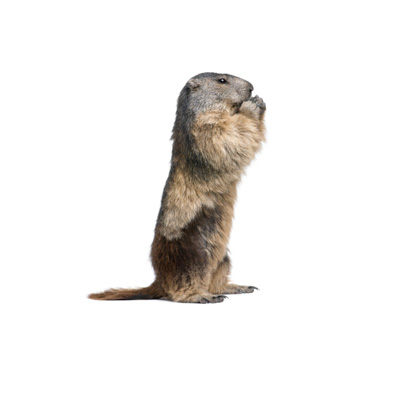Is That a Beaver or a Groundhog?
Although some people refer to groundhogs as land beavers, the two pests don’t have much in common. At a glance, it can be hard to know which animal is on the property. However, homeowners should be able to easily identify a woodchuck vs. a beaver problem after taking a closer look.
Some of the most obvious differences between beavers and woodchucks include:
- Appearance: While they’re both large rodents with brown fur and stocky bodies, that’s where the similarities in appearance between woodchucks and beavers end. Beavers have flat, rudder-like tails and yellow incisors, while groundhogs have short, bushy tails and white front teeth.
- Nesting Habits: Beaver bodies are perfect for aquatic living. Though they may venture onto lawns, beavers always den close to water or tunnel into riverbanks. Groundhogs can swim, but they’re mostly land animals. People often find their burrows in yards.
- Behavior: Woodchucks are solitary animals that don’t live with their young for long periods. In contrast, beavers mate for life. They usually live in colonies with their offspring from current and previous litters.
Differences in Damage
Beavers
Beavers fell trees planted in lawns, but they create more destruction with their dams. These structures disrupt the natural flow of water and lead to flooding.
Woodchucks
Woodchucks cause problems by eating garden plants. These pests also dig burrows and tunnel in yards. This behavior can ruin landscaping. In addition, woodchuck holes increase the chance of falling injuries for people, pets, and livestock.
Control for Beaver vs. Woodchuck Infestations
Anyone who approaches a wild animal is at risk of attack. Whether you’re dealing with beavers or groundhogs, professional assistance is the smart option for safe and humane control. Contact Critter Control for help removing wildlife pests from yards.
If you have woodchuck or beaver problems, contact a local office. Critter Control Near You

